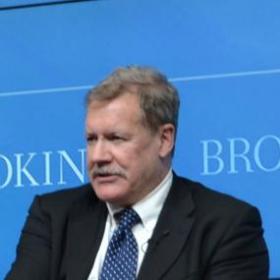
Postcard from Abu Dhabi: Seasons of Change
Greg Austin wrote this piece for this weekly column in New Europe.
About 16,000 years ago, the entire Persian Gulf (Arabian Gulf to some Arab states) was probably dry land. The Euphrates and Tigris rivers would have run through it and flowed directly into the ocean. The current coastal city of Abu Dhabi would have been more than 500km from the sea. The theory, based on seabed core sampling, is credible.
After inundation of the Gulf occurred sometime around 15,000 years ago, climate change brought about rises and falls in the sea level. Around 5,000 years ago, a “slight, but noticeable, change of climate must have taken place, leading to slightly cooler and dryer average conditions”… “sea level was almost three meters higher at the time the climatic changes began than it is today,” according to the scholarly study.
This theory of sea level change in the gulf may not be correct, but the United Arab Emirates (UAE) is a government that does not takes its physical environment, or indeed the global environment, for granted. You see this in the Abu Dhabi airport electronic posters: “If everyone passing through this airport turned the tap off while brushing their teeth, together we’d save 1,000 bathtubs of water every day”.
But Abu Dhabi has gone well beyond water conservation in its policies and in its global diplomacy for the environment. It is now home to IRENA, the International Renewable Energy Agency, which opened its office in the emirate in April 2010, after the organization was set up by treaty in January 2009. Abu Dhabi is also founder and host of the World Future Energy Summit, first held in 2008.
In January 2010, the UAE released the results of a study “Climate Change – Impacts, Vulnerability and Adaptation in UAE.” At the press conference for the release, H.E. Majid Al Mansouri, Secretary General of the Environment Agency Abu Dhabi, commented: “The UAE is seriously concerned about climate change on many levels. We are a country that already faces extreme climatic conditions and has precious natural resources, so long-term variations in temperature and precipitation will produce adverse impacts.”
The report concluded that current levels of water use in the UAE are unsustainable. According to the website of the UAE embassy in Washington, “Rising sea levels threaten penetration of groundwater aquifers by seawater, a particular concern to the UAE, which already faces problems with groundwater depletion and pollution.”
The report assessed the impact on the UAE of several scenarios for sea level rise over the next century, finding that even the more conservative scenario of a one metre rise would put at risk “85 per cent of its population living on the coast and more than 90 per cent of the infrastructure also lying along the seashores”.
By August, the UAE was recruiting internationally for staff of a newly formed Directorate for Energy and Climate Change. Some senior officials were suggesting that adapting to climate change has now become the main driver of Abu Dhabi’s strategic planning, at least in the economic sphere.
At the commercial level, the emirate has invested heavily in innovation for energy technology, most visibly through Masdar (meaning the “source’), the name both of a company established in 2006 and the high tech city it is building. The company aims to advance the “development, commercialisation and deployment of renewable energy solutions and clean technologies”. Masdar, the city, will be a “zero carbon, zero waste city”, and a test-bed for new energy technologies and carbon management policy. The country’s companies are looking to profit from carbon offset funding.
The CEO of the Masdar initiative, Dr Sultan Ahmed al Jaber boasts, “Our ambitions are global”. Will Masdar become the model city of the 21st century and a household name for our grand-children?

